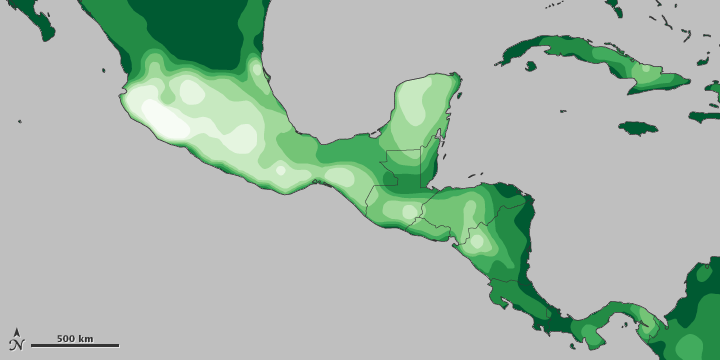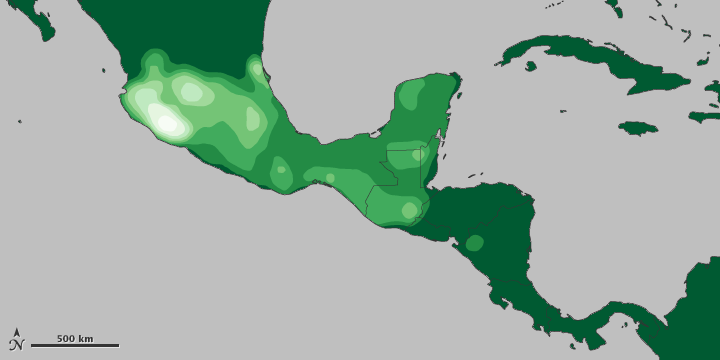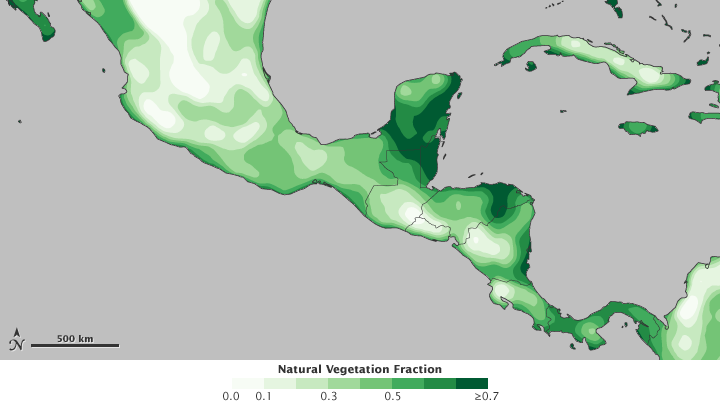




It is difficult to imagine the ancient cities of Central America without associating them with dense tropical forest. But the cultures that built towering stone temples also had to feed 19 million people. As these maps show, most of the land in ancient Central America was cleared, with very little old-growth forest intact.
The maps above are a reconstruction of forest extent at three different points: 800-950 A.D., the peak of Mayan culture (top); 1500-1650 A.D., the European colonial period (center); and 2000, modern conditions (bottom). Dark green areas show where tropical forests grew undisturbed. Lighter shades of green mark areas where some of the forest was cleared for agriculture and settlement. White indicates places where people removed all or nearly all of the forest.
As populations grow and cultures develop, agriculture becomes more efficient, and people need less land to grow food. People use the best land first, gradually moving to poorer soils and less ideal climate zones as population increases. Jed Kaplan of the Ecole Polytechnique Fédérale de Lausanne (Switzerland) and colleagues blended scientific evidence of population, soil conditions, and climate together with their understanding of human settlement patterns to create an annual, global inventory of how much native vegetation would have been altered to support populations. The maps above focus on changes in Central America.
The maps accurately reflect history. Central America was densely populated when the Mayan culture peaked in the ninth century. Land use during this period was most intense around cities and in the most fertile areas. After Europeans arrived, disease and conflict decimated the native population. The population density reached a low point in 1650. As the population declined, much of the land reverted to forest. After 1650, the population began to grow again, and though the population centers shifted, the pattern of intense land use near cities was still present.
In modern Central America, the Yucatan still has areas of intact forest, which may turn out to be vitally important to the people there. Without the forest, Central America’s climate could shift towards warmer, drier conditions. (See yesterday's image of the day.) Such a change may have contributed to the collapse of the Mayan civilization.
NASA Earth Observatory images created by Jesse Allen, using model data provided courtesy of Jed Kaplan of the Ecole Polytechnique Fédérale de Lausanne, Switzerland (800-950 and 1500-1650) and Kees Klein Goldewijk, Netherlands Environmental Assessment Agency (HYDE data, 2000). Caption by Holli Riebeek.